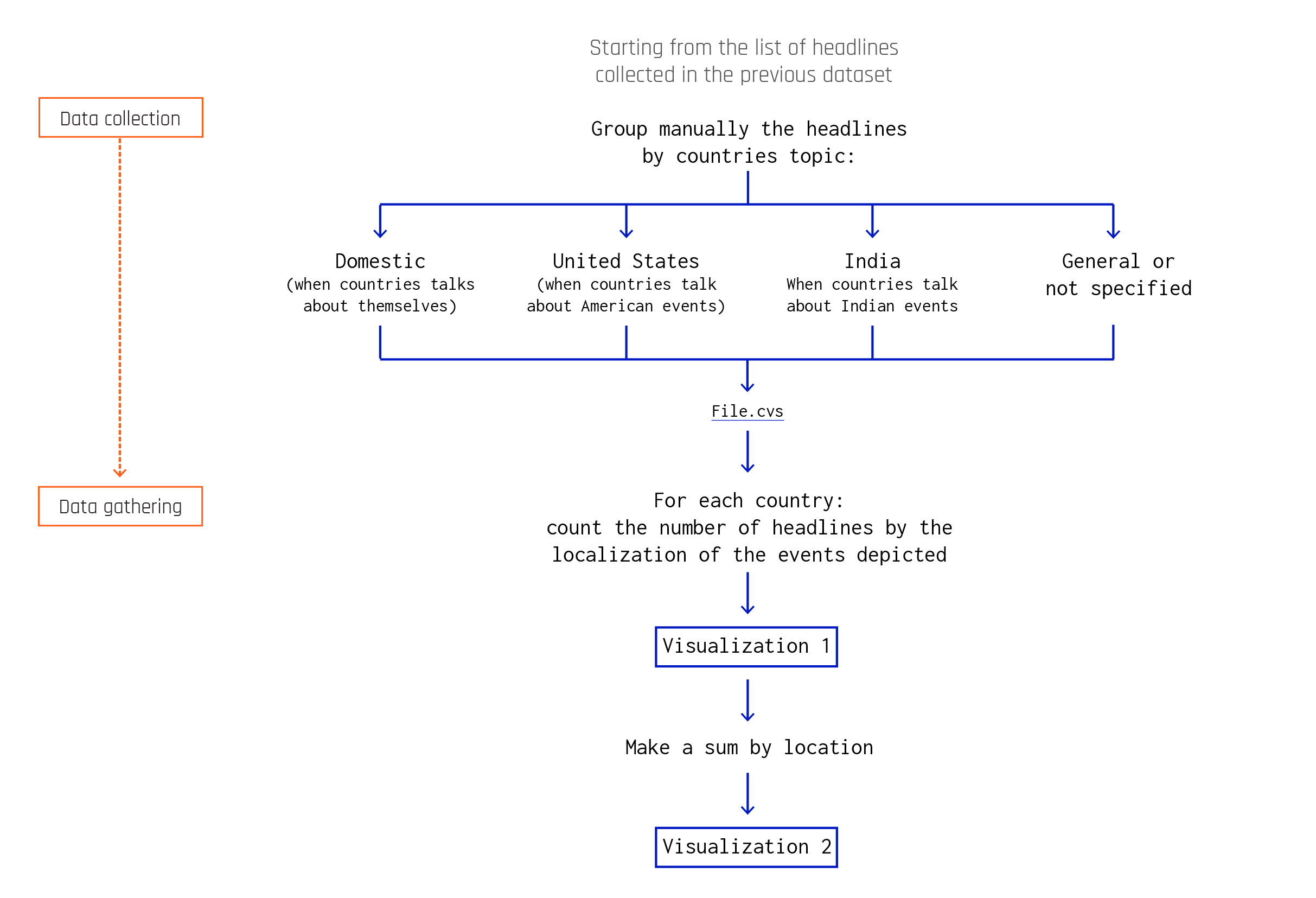Description
Each little square represents the proportion of the articles by the localization of the events mentioned. The biggest square on the left groups the total given by the sum of the country headlines. This representation wants to show where the events mentioned in the articles took place. The size of the country squares is standardized. We decided to group the localization using four areas. The first one is “Domestic”, where the news provider speaks about something happening in its own country. The second one is “General or not specified” where no nation is mentioned in the headline. We also added labels called “United States” and “India” because they are the only foreign countries appearing in the headlines of the others. The blue fill stands for the articles that are about some domestic news related to Net Neutrality. We labelled as Domestic the news speaking about the events happened in the native country of the news provider. We realized the headlines often mention some occurrences happened in the United States. So, we assigned the orange texture to the events located in the United States. In this way it is possible to highlight how each country treated the news and where the most relevant events related with Net Neutrality took place.
Protocol

Starting from the headlines in the previous dataset, we group manually the words following the localization criteria. We translated the articles in English as they were written in different foreign languages. The translation was in some cases inaccurate, because of its structural construction. So, we considered only the proper name appeared in the headlines. Proper name can not be translated. Starting from the proper names, we created some groups by localization, described in the top text. We counted the headlines for each country, dividing those speaking about domestic news from the ones speaking about the news located in some other country; then, we summed the number of headlines by localization group.
Data
Timestamp: 01/12/2016 - 05/12/2016
Data source: Google Scraper
Download data (44KB)
We used the headlines previously collected from Google Scraper. We focus on the events location, for this section.